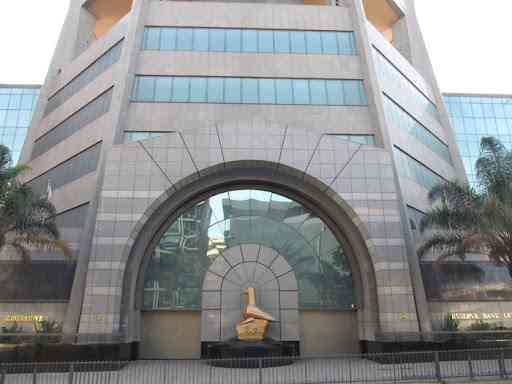
LAST week’s article dived deep into the problems associated with loosely-regulated financial institutions, which have not been made optimal for the country within which they operate.
Examples were offered, with a particular focus on South Africa and the United States of America (USA), showing how such problems may even get out of hand.
This week, I describe challenges encumbering Zimbabwe’s own financial sector. I also provide recommendations on how the sector can be made more relevant and beneficial to Zimbabwe’s context.
Implications for Zimbabwe
Zimbabwe’s financial sector is not exempt from the challenges bedevilling the financial sectors of South Africa and the USA, whose difficulties were intricately explained last week. In fact, it has more problems which need to be fixed even as a matter of urgency.
Dissecting some of those challenges is essential, at this stage. Firstly, restrictive charges are an issue which continues to repel depositors from saving more of their money for longer time periods.
However, even though the deposit-base (there are few depositors and savers) is extremely narrow in Zimbabwe, local financial institutions are making abundant profits. It is the same prohibitive service fees, which have enabled them to thrive lusciously.
Secondly, the sentiment surrounding the local currency (ZiG) remains unfavourable.
- I rejected Zanu PF scarf: Burna Boy
- NMB workers take on employer
- Mbavara eyes to resurrect Matavire’s music legacy
- I rejected Zanu PF scarf: Burna Boy
Keep Reading
Several economic participants have lost faith in it and prefer saving in US dollar cash, which they safeguard at their own homes or businesses (outside of the banking system).
Thirdly, there is a severe scarcity of finance in the formal banking channels. For instance, as of 2024, the country had only US$3 billion of deposits, within the formal banking system.
On the other hand, South Africa, for example, had more than US$350 billion worth of deposits in the banking system, in the same year. Local stock exchanges are very tiny and do not provide enough turnover to enable sensibly-sized modern organisations to raise funds through them.
Recommendations
In order to make the local fiancial sector optimal for the Zimbabwean context, policymakers may attempt to adopt some recommendations provided below:
Zimbabwean banks and other financial institutions are too small. Even by regional (Sadc) standards. Coupled with a very thin deposit base, if the banks do not increase their size, they will continue to depend on prohibitive service fees as a significant revenue stream.
Sadly, the high service fees have a feedback effect of repelling the growth of the same deposit base. In order to address this, local banks should be encouraged to merge so that they form just four or five huge banks. The same applies for other financial institutions (pension funds, insurance, etc).
Once merged, they will have a great opportunity to reduce their charges and remain profitable, since they would end up serving a larger share of the market and enjoying economies of scale.
Overall, a social contract (agreement by consensus) should be implemented between government and financial institutions, so that their profits do not exceed a certain ratio, in comparison to their total revenues. That figure may be between 10%-20%, for example.
This will ensure that the institutions charge their clients much less, as they retain very modest (reasonable) profit margins. It can be expected that the lower bank charges would draw more Zimbabweans to bank their savings in the local currency and in the formal banking channels, for longer durations.
If the banks are not willing to voluntarily reduce their charges, including profits, the government will then need to consider reasonable ways of mildly regulating them. An example of such regulation would be to charge them a higher corporate tax, which is exclusive to only them, in the whole country.
For instance, the government may threaten to charge as much as 50% for corporate income tax and regularly cap (regulate) the price of the major “in-demand” services provided by the institutions.
This may entail regulating interest rate spreads — by way of reducing the difference in the interest rates paid to depositors and that charged by banks to those who borrow from them.
Such a move (reducing interest rate spreads) would effectively reduce some of the institutions’ excessive profits, encourage more long-term savings in formal channels, whilst being socially just (principled) in favour of the wider public (savers, pensioners, etc).
In France, in June 2023, the Finance minister managed to secure a pledge from 75 top food companies to cut prices on hundreds of products, in order to reflect a fall in raw material costs, which had risen on account of supply-chain issues during Covid.
Just before that, food prices had continued to climb in France, whilst receding in other countries, since global energy and agricultural commodity costs had begun to fall sharply. Participants in the food value-chain, that had increased their prices by over 10% (since June 2022), whose input costs had fallen by over 20%, were particularly affected.
The price reduction meant that consumers would benefit from lower prices and reduced overall inflationary pressures. By law, French food producers (farmers, manufacturers, etc) and retailers of critical food items (grains, milk, sugar and meat, etc), have a three-month time window where negotiations for market prices can take place.
This window is between December 1 and March 1 every year.
Prices are then locked in for a full year, unless where a few unique deals include review clauses. Revision clauses only cover around 20% of the contracts.
The anti-fraud body — Directorate-General for Competition Policy, Consumer Affairs and Fraud Control — is tasked to make regular checks in supermarkets to ensure that prices have indeed fallen and companies can face financial sanctions if they have not followed through.
If an advanced economy, such as France can resort to price controls, then the mechanism can also be emulated in Zimbabwe, as long as it is intelligently designed. If poorly designed, however, price controls can be dangerously disastrous.
If local financial institutions have invested significant amounts in other countries, that can also be looked into, with the intention of repatriating the funds, particularly when the domestic economy becomes stable.
This will provide more funds for the local banking sector, which they can use for onward lending to other local economic participants. Additionally, Zimbabwean interest rates would decrease when such funds are repatriated.
This will be a further impetus for greater borrowing by local consumers and businesses, with the ultimate impact of greater economic growth.
Moreover, repatriation of such funds will strengthen the local currency.
To be fair, the government can only demand or direct that repatriation when the economy and currency are stable. Taking South Africa’s example, the country exports around US$100 billion of goods and services each year.
However, repatriation of foreign funds deposited in other countries can earn South Africa, over US$300 billion, which is three times more than its annual exports.
Regarding the issue of unclaimed funds, Zimbabwe needs a single, publicly accessible database where people can search for unclaimed benefits. Right now, information is scattered across multiple institutions, making it almost impossible for the average person to track down missing funds.
The government can also establish a law, which ensures that unclaimed finances in both the private and public financial institutions should be forfeited to the government.
This will provide generous amounts of funding for various national programmes, such as the building and maintenance of public infrastructure, among other things.
On the other hand, if the authentic beneficiaries of the funds, which were forfeited to government eventually, show up and claim their money, it is straightforward that the government will be able to reimburse them at any given point in time.
This is because the government already has huge financial capacity to meet any such claims.
For instance the national budget of Zimbabwe is typically over US$4 billion, each year.
Government may also subsidise loans and bank charges for firms operating in the high-employment sectors of the economy. For example, a subsidy between 0,5%-1% on interest charged on loans, will provide cheaper loans and greater breathing space for beneficiary organisations to expand their activities, employ more workers, pay more taxes to government and remain globally competitive.
Examples of high-employment sectors in the private sector are; agriculture, services (tourism, transport and logistics, healthcare, etc).
By providing preferential borrowing terms for high-employment industries, it can be expected that the country's income and wealth will be more evenly distributed.
In other words, the expected increase in activity pertaining to high-employment sectors, will result in more workers having a stake in the country’s annual corporate earnings.
Critical industries in areas such as manufacturing can also be targeted for these concessionary loans.
Conclusion
Last week’s article introduced the discussion on why a country’s financial sector can be detrimental, if left to its own whims. It described the state of financial institutions in South Africa and the USA, noting how their deregulation poses a risk to their entire economies.
It is essential to understand that adequate vision and intellectual capacity is critical, if local policymakers are going to negotiate for conditions which are mutually beneficial between: local financial institutions, their customers, the government and the wider citizenry.
Indeed, the local financial sector should be optimised, as far as possible — so that it serves multiple interests and the overall economy.
Tutani is a political economy analyst. — [email protected].











